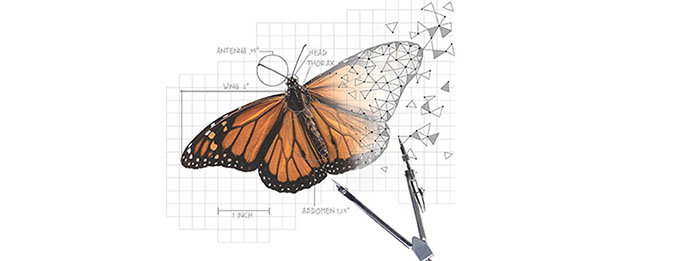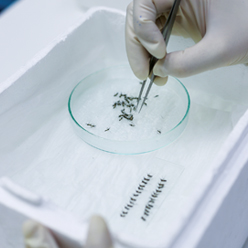
Continuous Environmental Tracking
An Engineering-Based Biological Model
“Our task is to fundamentally change the way people understand biology by constructing a completely new theory of biological design that incorporates recent discoveries and respects the biblical narrative—all with the goal of igniting a second creationist revival.” — ICR President Randy J. Guliuzza
The Institute for Creation Research has created an engineering-based model called continuous environmental tracking (CET) to explain the biological function of adaptation. Organisms have behaviors and actions that result from the purposeful arrangement of parts that is fundamentally distinct from the operation of the individual parts themselves. There are indications that essentially everything (molecules, parts, systems, etc.) about a creature functions not for a single purpose but for multiple purposes. These are innate capabilities derived solely from a creature’s internal systems.
CET is a new model that flows from the latest findings in molecular biology—identifying innate sensing systems and logic mechanisms that direct targeted responses to environmental challenges. Living creatures are active, problem-solving entities that continuously track changing environmental conditions and through innate systems purposefully adapt themselves over time to better fit existing niches or fill new ones.
ICR is at the cutting edge of developing an approach to biology that’s totally current, fully pro-life, and truly Christ-honoring. Our goal is to build a clear, concise, and easily communicable biological framework that explains biological functions from an organism-centered, engineering-based perspective that gives glory to the Creator—not to nature. With the scientific insight and enablement of the Lord Jesus, we are moving forward to seize this extraordinary opportunity.
For further reading on the development of ICR’s CET model:
 The Mission of the Institute for Creation Research
The Mission of the Institute for Creation Research
Randy J. Guliuzza, P.E., M.D.
Every morning when I drove onto the military base where I worked I was met with a sober message. For many years it read “Remember the Mission!” I was taught that the mission of the church could be organized into three basic functions: worship, edification, and evangelism. ICR’s following five jobs support the church’s mission. More...
 A New Commitment to Deep Research
A New Commitment to Deep Research
Randy J. Guliuzza, P.E., M.D.
If all is on schedule, and with the good blessings of the Lord Jesus, then as you read this article nearly all of the ICR scientists and a number of support staff will be working on the first-ever ICR science expedition. This important research trip into northern Wyoming has multiple scientific objectives. More...
 Finding Biblical Clues to Design
Finding Biblical Clues to Design
Randy J. Guliuzza, P.E., M.D.
About 20 years ago, physicist Dr. Russ Humphreys urged me to search the Bible as a navigational guide with clues about nature that could point toward a sensible path of research for explaining natural phenomena. That advice was invaluable. It guides ICR’s approach to research. More...
 Engineered Adaptability: Continuous Environmental Tracking Wrap-Up
Engineered Adaptability: Continuous Environmental Tracking Wrap-Up
Randy J. Guliuzza, P.E., M.D.
The Engineered Adaptability series has explored ways in which scientific methodology and understanding benefit when engineering principles are applied to how living things function. In the process, we have built a conceptual framework for a design-based model. This article takes a bird’s-eye view of what the series has presented. More...








